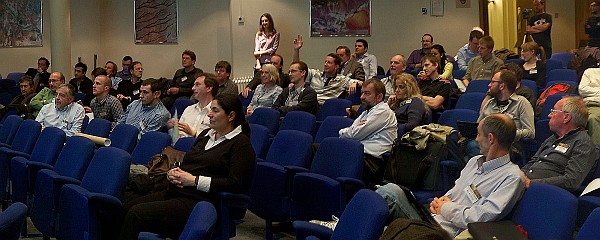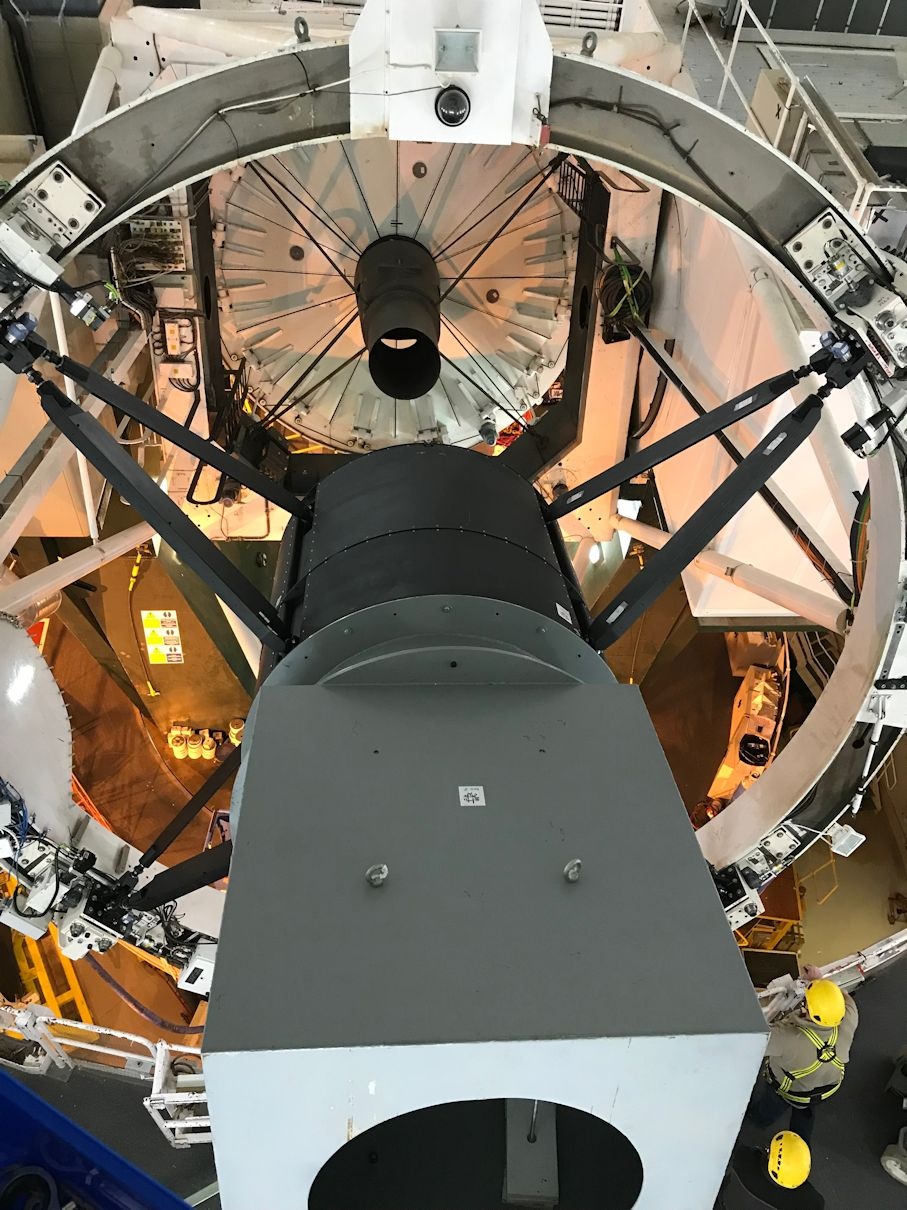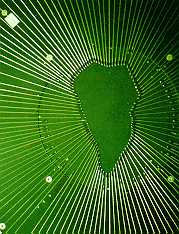| Scroll Ignore | ||||||
|---|---|---|---|---|---|---|
|
|
|
Overview
WEAVE is (WHT Enhanced Area Velocity Explorer) is a powerful new multi-object spectrograph for the 4.2-m William Herschel Telescope at the Observatorio del Roque de los Muchachos, on La Palma in the Canary Islands. It will allow astronomers to take spectra of up to 1000 stars and galaxies in a single exposure. This huge leap in observing efficiency (currently a maximum of 100 objects can be observed simultaneously) will allow astronomers to tackle several astrophysical problems that until now have remained out of reach.
One of the most exciting of these is finding out how our Galaxy (the Milky Way) was assembled. To do this, astronomers need first to measure the current positions and motions of the galaxy's stars and then, in effect, run the clock backwards. The positions in three dimensions of about 1000 million of the Galaxy's stars will be measured by the European Space Agency's GAIA satellite, launched in 2013. The speeds of the stars towards or away from us can more accurately be measured from a ground-based telescope than by GAIA, and this is where WEAVE comes in. WEAVE will measure the speeds of several million of the stars mapped by GAIA. Astronomers will then be able to unravel the sequence of events which brought into being the Milky Way galaxy (and us).
| Html-bobswift |
|---|
<center> |
The Milky Way galaxy, as viewed from the Roque de los Muchachos Observatory. Credit: Nik Szymanek.
| Html-bobswift |
|---|
</center> |
Another key project for WEAVE will be studying how galaxies have evolved over the aeons. To do this, astronomers will take spectra of galaxies up to several billions of light years away, effectively looking back in time to see each galaxy as it was when the light started out on its journey towards us. From these spectra, astronomers will be able to deduce the chemical composition of the galaxy at that time and the rate at which new stars were forming.
European astronomers are in broad agreement about the need for a powerful multi-object optical spectrograph on a medium-sized telescope in the northern hemisphere to tackle such questions (see for example a recent report by ASTRONET's European Telescope Strategy Review Committee).
In March 2010, 90 astronomers from across Europe met in London for a workshop on "Science with the William Herschel Telescope 2010-2020", and plans for WEAVE were hatched at this meeting. Fabrication of WEAVE is now well-advanced, and the goal is to have it operational by mid-2018 (see timeline).
| Html-bobswift |
|---|
<center> |
| Html-bobswift |
|---|
</center> |
To increase the field of view of the William Herschel Telescope, new optics (including a lens more than 1 metre across) will be installed at its prime focus (top end). These optics will create an image of a patch of sky about 2 deg in diameter (4 times the diameter of the full moon). Light from 1000 individual stars and galaxies within this area will then be picked off by 1000 robotically-positioned optical fibres in the focal plane, and fed to the spectrograph, located on a platform lower down the telescope.
| Html-bobswift |
|---|
<center> |
The prime focus of the William Herschel Telescope with the dummy WEAVE top-end assembly mounted.
| Html-bobswift |
|---|
</center> |
| Html-bobswift |
|---|
<center> |
| Html-bobswift |
|---|
</center> |
Optical fibres of the WHT's current multi-object spectrograph, AUTOFIB-2/WYFFOS. Up to 100 fibres (out of a total of 150) can be positioned over a 50-arcmin field of view in the focal plane of the telescope, each picking up the light from an individual star or galaxy, and feeding it to the spectrograph. (Here, the fibre heads have been positioned to outline the shape of the island of La Palma.)
WEAVE will have seven times as many fibres as AUTOFIB-2/WYFFOS, and will be able to position them over an area six times larger.
WEAVE's spectrograph disperses the light from each star or galaxy into its component colours (wavelengths) from red through to blue and measures the intensity of the light at each of about 5000 separate wavelengths. Armed with this information, astronomers can measure accurately the speed at which the star or galaxy is travelling, and also its chemical makeup.
WEAVE stands for WHT Enhanced Area Velocity Explorer. The acronym aptly reflects the challenge of positioning correctly, in a 2-dimensional plane, a large number of fibres. Weaving also happens to be a long-standing traditional handicraft on the island of La Palma!
Further information:
ESA video presentation 'Charting the Galaxy - from Hipparcos to Gaia'




